

Summary of Supplements Required for NYC Public High School Admissions 2022
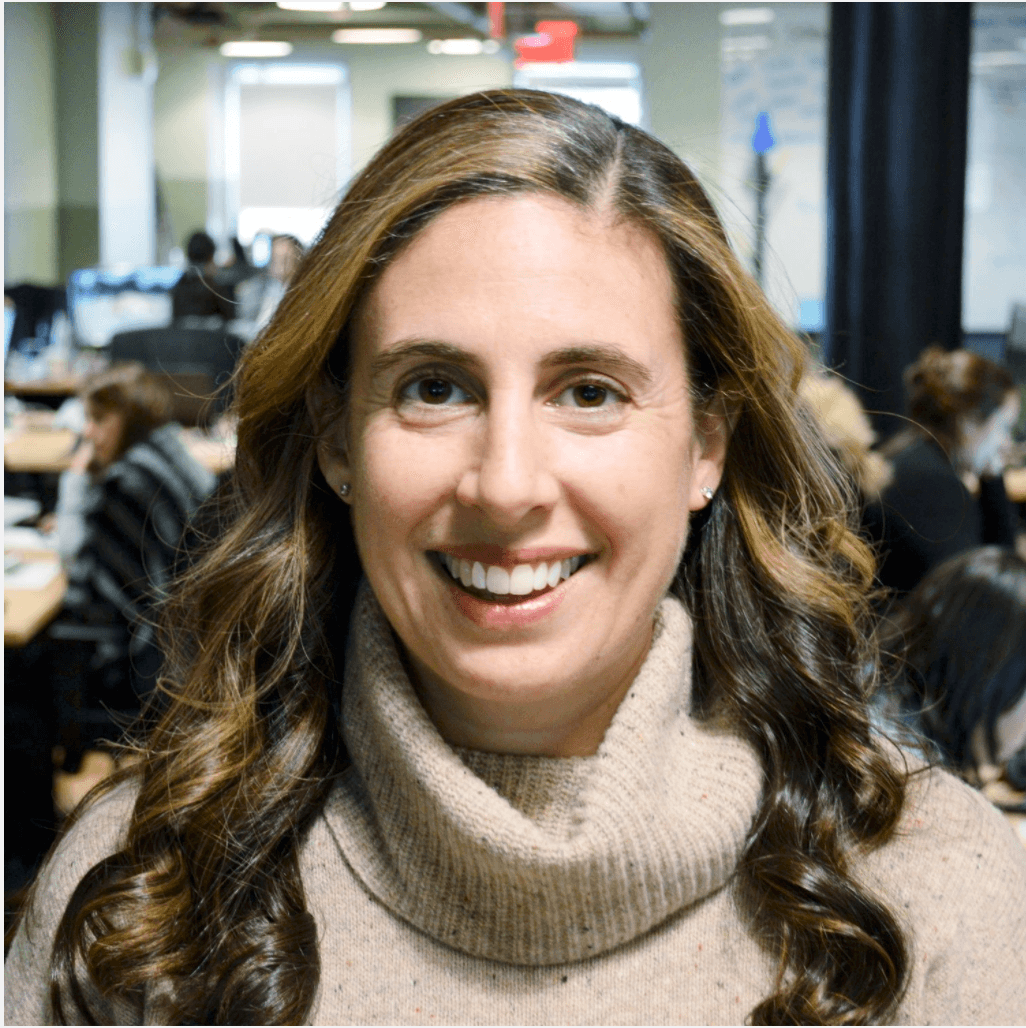
SUMMARY OF SUPPLEMENTS REQUIRED FOR NYC PUBLIC HIGH SCHOOL ADMISSIONS 2022 (updated as of 2/4/22)
WORK IN PROGRESS – STAY TUNED FOR UPDATES
Beacon School
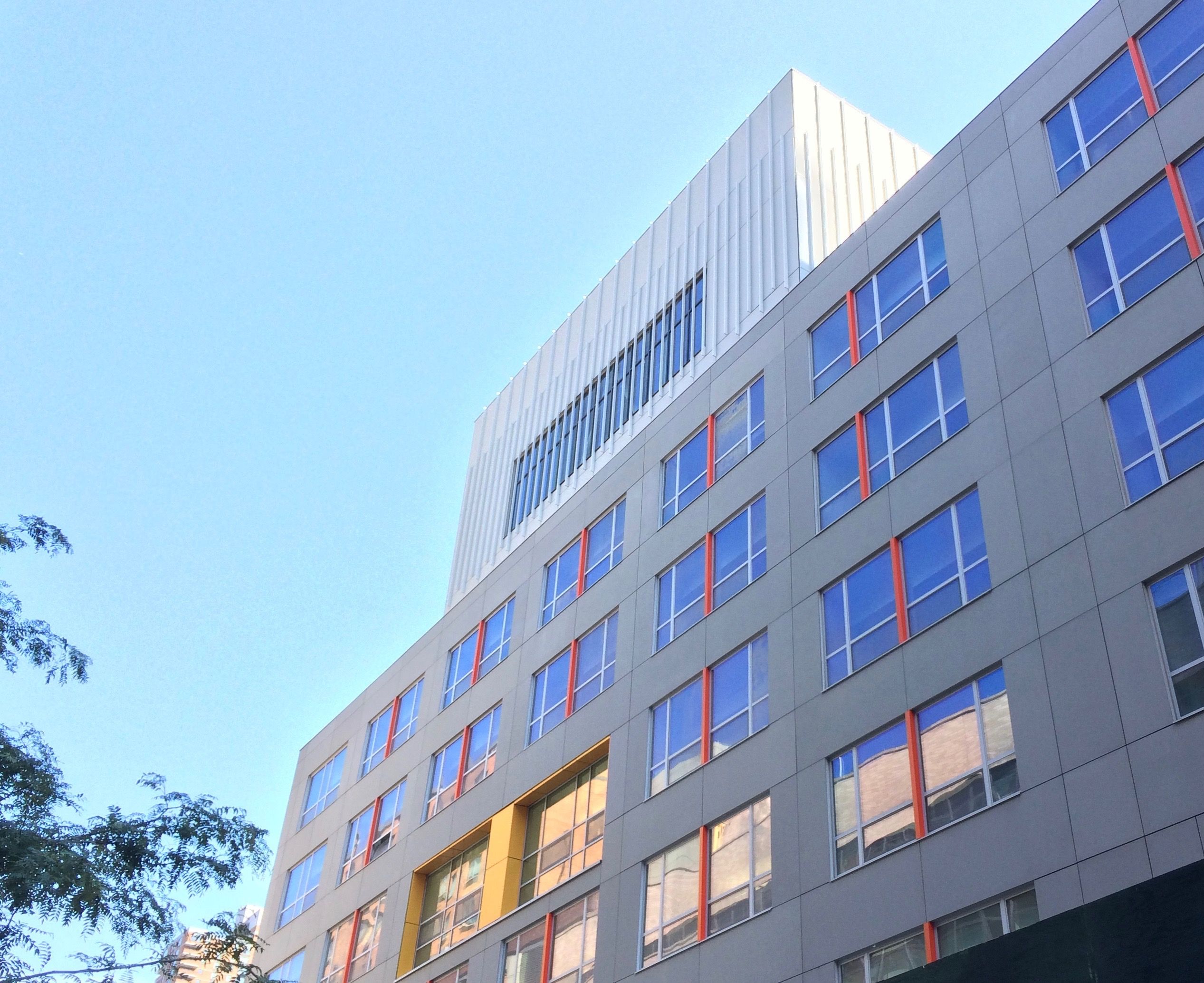
Photo By Wikiedior129293 at English Wikipedia, CC BY 3.0, https://commons.wikimedia.org/w/index.php?curid=54607865
80% Essay 20% grades
Application prompt:
Consortium Schools believe that students thrive when they are given the opportunity to study topics in-depth and apply their learning outside of the classroom. Beyond just taking tests, our students demonstrate their skills in practical terms: they design experiments, make presentations, write reports, and defend their work to outside experts.
Reply to ONE of the below prompts – 500 words or fewer. No rubric provided yet.
- How do you think a school with this approach to learning will help you grow academically, personally, and creatively? What do you think you have to offer a school community like this?
- We admire students who are flexible in their approach to learning and willing to take intellectual risks that move them out of their comfort zone. Reflect on a time when you were intellectually challenged, inspired, or took an intellectual risk - inside or outside the classroom. How has that experience shaped you?
Manhattan Hunter Science
In 250 words or less, describe yourself as a student, as well as what interests you in attending a rigorous early college high school, which includes a senior year experience on the Hunter College campus.
Essay 30% Grades 70%
NYC ischool
100% online admissions activity – due March 4
Prior to completing the activity, please do the following:
- Take some time to look through our website to learn more about our mission, vision, and program. We especially encourage you to check out the FAQ section.
- Watch this video that was made about the iSchool a few years ago: NYC iSchool Video
- Look through the 2021-2022 Q1 Course Descriptions to learn more about the courses that you may be able to choose from if you attend the iSchool next year.
- Check out the rubric we'll be using for the online admissions activity: NYC iSchool Admissions Activity Rubric
- Once you have done the above, you should complete the NYC iSchool Admissions Activity .
Once you start the activity you will not be able to save your work and come back to it, so you may want to look at the questions, type your answers in Microsoft Word, and then cut and paste your answers from Microsoft Word in to the activity. The deadline to complete our online admissions activity is Friday, March 4th. Please note that this is a hard deadline and the form will close at 11:59 pm on March 4th.
You will receive an e-mailed copy of your Online Admissions Activity answers within one week of your submission.
Having looked through our website, watched our video, read through the FAQs on our website, and read through a sample of our course descriptions, why do you want to attend the iSchool? What excites you most about our program? This response should be, at least, 2 paragraphs in length.
Is there anything else that you would like us to know about you?
Frank McCourt
Grades 20% “Interview or online response” / essay 80%
Please use your child's current school email OR a personal Gmail account to access and complete the online essay/video.
Applicants can respond to the essay questions one of two ways: by uploading a typed answer OR by uploading a video response.
Typed essays should be at least 250 words in length. Video submissions must be no more than 2 minutes long.
PLEASE INCLUDE YOUR FULL NAME, CURRENT SCHOOL, AND GRADE ON ALL YOUR TYPED ESSAYS/VIDEOS.
Essay questions:
Why do you want to be a student at Frank McCourt High School? (minimum 250 words)
Which of the following FMHS elements are you excited to learn more about when you are a student here? *
Please select 3 of the following
Competency Learning - Using Outcomes (specific skills that can help you learn better)
Competency Learning - Having chances to revise your work to better show off your skills
Advisory - One teacher and set of students you will stay with for 4 years
PGC - Peer Group Connection - meeting weekly with mentors from the older grades
Integrated Curriculum - Taking classes that blend 2 or more subjects
Intersession - One intensive class for 5-6 weeks in 11th and 12th grade
Block Schedule - Longer class periods so there is time for group problem solving
Collaboration - Working in groups and teams for projects and processes to help each other learn
Diversity - Working with students and staff from many different places in NYC and the world
Why do the above elements of FMHS excite you? Explain your top three selections. (minimum 250 words)
School of the Future
Essay 100% (See Beacon prompt above)
University Heights
Grades 50% Essay 50% (See Beacon prompt above)
Brooklyn College Academy
25% essay 75% grades (not posted yet)
Bard Manhattan / Bard Queens

Photo By Beyond My Ken - Own work, CC BY-SA 4.0, https://commons.wikimedia.org/w/index.php?curid=11794458
About the Assessment and Rubric Components:
The BHSEC Assessment was created and developed by the BHSEC faculty and administration to assess applicants writing, thinking, and interest in an early college.
There are three parts to the assessment: two writing prompts and a short video statement.
The answers to the writing prompts are to be submitted through MySchools. They should be approximately 250-500 words or 1200-2500 characters per prompt. The answers should be well organized and well written, showing clarity, and creative or original thinking.
The video statement should be 2 minutes and uploaded to MySchools.The applicant should be engaging, clear, and show signs of preparation.
For 2021-2022 Students will be ranked based on the following rubric components:
Humanities Response – 30%
STEM Response – 30%
Video Response – 30%
Grade Point Average – 10%
Assessment link not yet available
Bard Queens video prompt: Video Statement
In the past we have held one on one interviews to get to know each applicant. We are not able to meet with you in person this year due to the pandemic. However we still want to hear from you and to learn more about why you are interested in attending our school. We are not looking for perfection, we are looking for students who engage with the questions in a genuine manner.
In the video please introduce yourself and answer BOTH questions below. You must upload your video on Myschools. Videos should be between 1 – 2 minutes long.
To apply to either or both of these programs, please complete all three parts of this assessment (Humanities Writing, STEM Writing, and Video).
Part 1: Humanities Writing
Choose only one of the two texts, either TEXT A or TEXT B, and respond to only ONE of the questions. Your response should be between 250-500 words (approximately 1200-2500 characters).
TEXT A. "The Dangers of a Single Story," by Chimamanda Ngozi Adichie
1. How does the author use storytelling to push back against the danger of a single story?
2. Why was the author’s new American roommate “very disappointed when I produced my tape of Mariah Carey”? How does this example fit into the theme of the text?
3. What does the author mean when she says “start the story with the arrows of the Native Americans, and not with the arrival of the British, and you have an entirely different story”?
Excerpt: The Danger of a Single Story
FEBRUARY 2, 2017 BY THECOLUMNMW
By Chimamanda Ngozi Adichie
How impressionable and vulnerable we are in the face of a story, particularly as children. Because all I had read were books in which characters were foreign, I had become convinced that books by their very nature had to have foreigners in them and had to be about things with which I could not personally identify. Now, things changed when I discovered African books. There weren’t many of them available, and they weren’t quite as easy to find as the foreign books.
But because of writers like Chinua Achebe and Camara Laye, I went through a mental shift in my perception of literature. I realized that people like me, girls with skin the color of chocolate, whose kinky hair could not form ponytails, could also exist in literature. I started to write about things I recognized.
I come from a conventional, middle-class Nigerian family. My father was a professor. My mother was an administrator. And so we had, as was the norm, live-in domestic help, who would often come from nearby rural villages. So, the year I turned eight, we got a new house boy. His name was Fide. The only thing my mother told us about him was that his family was very poor. My mother sent yams and rice, and our old clothes, to his family. And when I didn’t finish my dinner, my mother would say, “Finish your food! Don’t you know? People like Fide’s family have nothing.” So I felt enormous pity for Fide’s family.
Then one Saturday, we went to his village to visit, and his mother showed us a beautifully patterned basket made of dyed raffia that his brother had made. I was startled. It had not occurred to me that anybody in his family could actually make something. All I had heard about them was how poor they were, so that it had become impossible for me to see them as anything else but poor. Their poverty was my single story of them.
Years later, I thought about this when I left Nigeria to go to university in the United States. I was 19. My American roommate was shocked by me. She asked where I had learned to speak English so well, and was confused when I said that Nigeria happened to have English as its official language. She asked if she could listen to what she called my “tribal music,” and was consequently very disappointed when I produced my tape of Mariah Carey.
So, after I had spent some years in the U.S. as an African, I began to understand my roommate’s response to me. If I had not grown up in Nigeria, and if all I knew about Africa were from popular images, I too would think that Africa was a place of beautiful landscapes, beautiful animals, and incomprehensible people, fighting senseless wars, dying of poverty and AIDS, unable to speak for themselves and waiting to be saved by a kind, white foreigner. I would see Africans in the same way that I, as a child, had seen Fide’s family.
It is impossible to talk about the single story without talking about power. There is a word, an Igbo word, that I think about whenever I think about the power structures of the world, and it is “nkali.” It’s a noun that loosely translates to “to be greater than another.” Like our economic and political worlds, stories too are defined by the principle of nkali: How they are told, who tells them, when they’re told, how many stories are told, are really dependent on power.
Power is the ability not just to tell the story of another person, but to make it the definitive story of that person. The Palestinian poet Mourid Barghouti writes that if you want to dispossess a people, the simplest way to do it is to tell their story and to start with, “secondly.” Start the story with the arrows of the Native Americans, and not with the arrival of the British, and you have an entirely different story. Start the story with the failure of the African state, and not with the colonial creation of the African state, and you have an entirely different story.
I’ve always felt that it is impossible to engage properly with a place or a person without engaging with all of the stories of that place and that person. The consequence of the single story is this: It robs people of dignity. It makes our recognition of our equal humanity difficult. It emphasizes how we are different rather than how we are similar.
Stories matter. Many stories matter. Stories have been used to dispossess and to malign, but stories can also be used to empower and to humanize. Stories can break the dignity of a people, but stories can also repair that broken dignity.
TEXT B. "Perhaps the World Ends Here," by Joy Harjo
1. What does the kitchen table symbolize in this poem, and in what ways is a kitchen table an effective or ineffective object to express these ideas through?
2. What patterns do you see in the images that Harjo surrounds the table with? If this poem is about the "world," what are the qualities of the world in Harjo's poem?
"Perhaps the World Ends Here"
by Joy Harjo
The world begins at a kitchen table. No matter what, we must eat to live.
The gifts of earth are brought and prepared, set on the table. So it has been since creation, and it will go on.
We chase chickens or dogs away from it. Babies teethe at the corners. They scrape their knees under it.
It is here that children are given instructions on what it means to be human. We make men at it, we make women.
At this table we gossip, recall enemies and the ghosts of lovers.
Our dreams drink coffee with us as they put their arms around our children. They laugh with us at our poor falling-down selves and as we put ourselves back together once again at the table.
This table has been a house in the rain, an umbrella in the sun.
Wars have begun and ended at this table. It is a place to hide in the shadow of terror. A place to celebrate the terrible victory.
We have given birth on this table, and have prepared our parents for burial here.
At this table we sing with joy, with sorrow. We pray of suffering and remorse. We give thanks.
Perhaps the world will end at the kitchen table, while we are laughing and crying, eating of the last sweet bite.
"Perhaps the World Ends Here," from The Woman Who Fell From the Sky by Joy Harjo. Copyright © 1994 by Joy Harjo. Used by permission of W.W. Norton & Company, Inc., www.wwnorton.com(Open external link). Source: The Woman Who Fell From the Sky (W. W. Norton and Company Inc., 1994)
Part 2. STEM Writing
Please select ONE question to respond to from the following choices. Your response should be between 250-500 words (approximately 1200-2500 characters).
1. You are stranded on an island and you may take one modern invention with you. Explain why you chose the item and describe some of the issues you may encounter trying to keep the item functional while stranded.
2. Suppose you wake up one morning and suddenly know everything there is to know about math and science. If you could use that math and/or science to solve a world problem, what problem would you solve? Describe the problem. How do you think math and/or science could be used to address the problem?
Part 3. Video
Please submit a 2 minute (maximum time) video that includes ALL of the following:
A. An introduction to you
B. An answer to both of the questions below:
i. Our school mission is premised on the belief that many students, from all backgrounds, are ready and eager to begin taking college-level courses in high school. Why do you think you’ll be ready to take college classes in the 11th grade?
ii. How do you think your choice of attending Bard High School Early College, rather than a traditional high school, will impact your high school career?
-Katherine Miller Consulting ( www.katherinemillerconsulting.com )

Take a Diagnostic Exam in NYC
Start with a diagnostic SAT, ACT, SHSAT, ISEE, SSAT, TACHS, or AP test so you know where you stand and where you need improvement. Knowledge is power!
Related Blog Posts
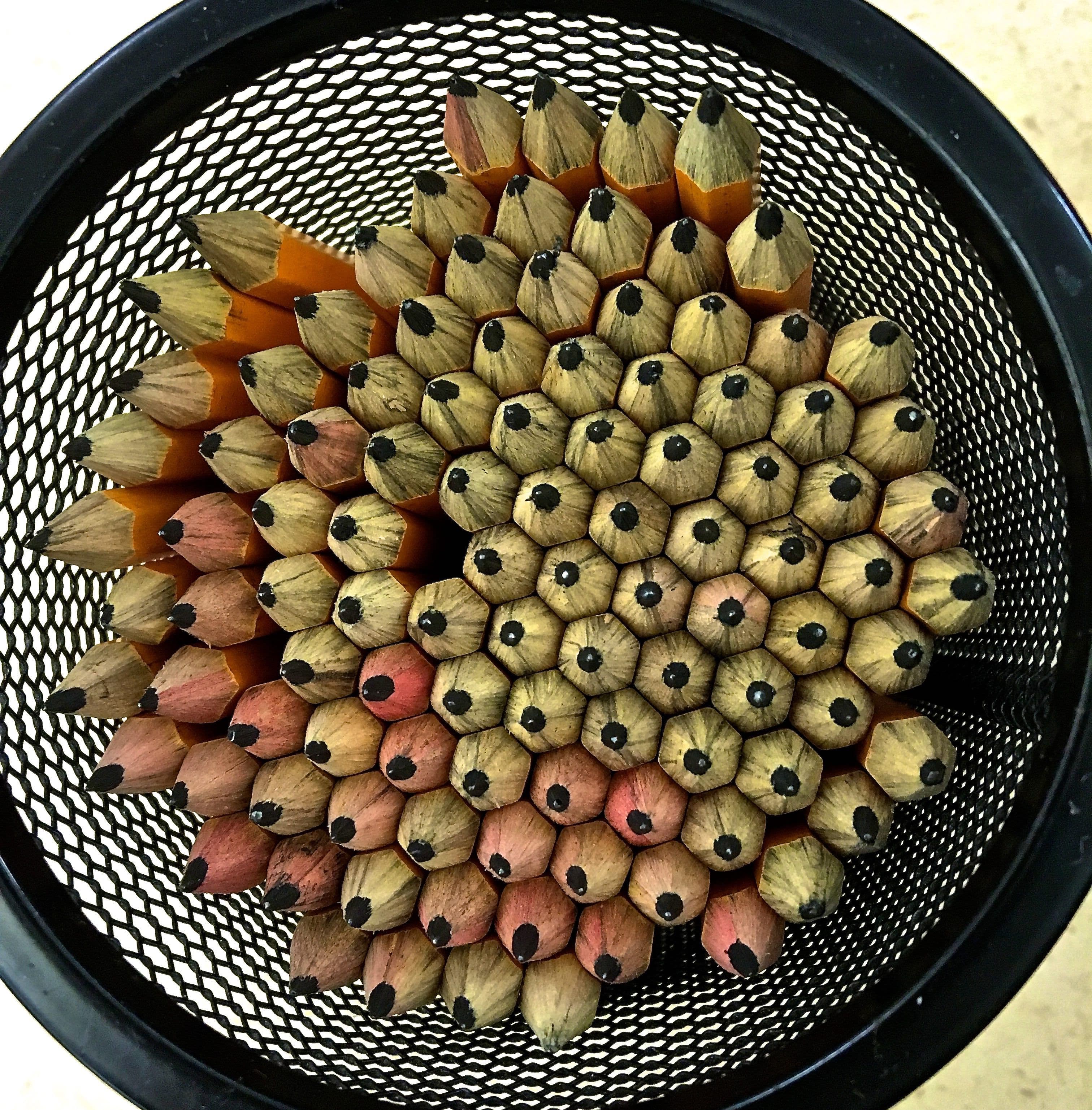
The site navigation utilizes arrow, enter, escape, and space bar key commands. Left and right arrows move across top level links and expand / close menus in sub levels. Up and Down arrows will open main level menus and toggle through sub tier links. Enter and space open menus and escape closes them as well. Tab will move on to the next part of the site rather than go through menu items.
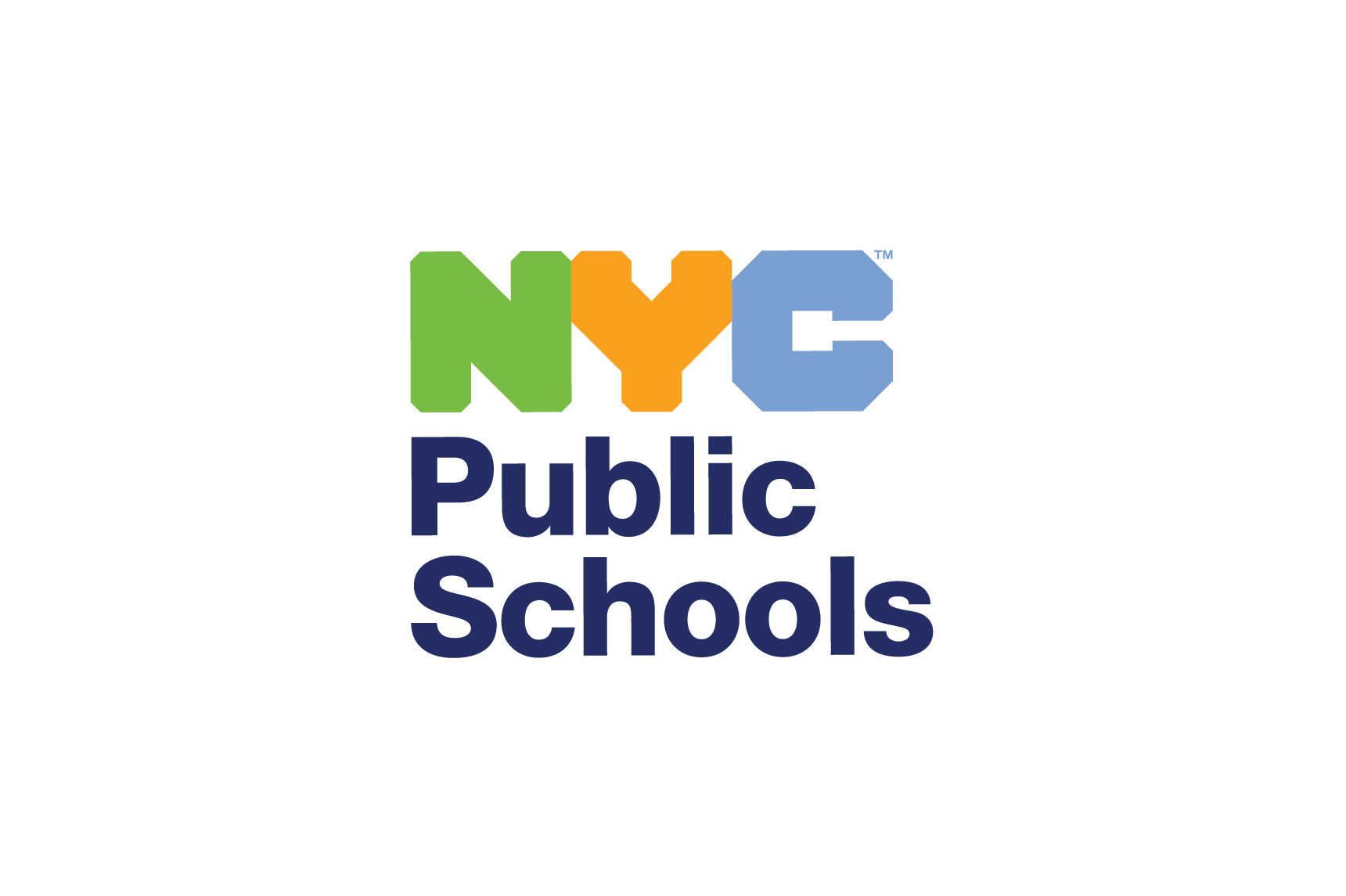
- Assessments for Screened Schools
For Fall 2024 Admissions
The schools in the table below are using assessments as part of Fall 2024 admissions. To apply to any program listed below, students need to both list it on their high school application and complete the school's assessment by December 1.
Please note, five of the Consortium High Schools (Beacon, East Side Community, Institute for Collaborative Education, School of the Future, and University Heights Secondary) are sharing a common written assessment.
- The Selection Criteria column indicates which factors a school considers when determining offers.
- The Assessment Information column has each school's requirements. Applicants can follow links to school websites to learn what the assessment is and how to submit it.
Programs Using Assessments for 2024 Admissions
Submitting assessments.
Most schools are managing their own assessment process, and are collecting completed tasks on their own website. Some schools may be doing assessments in-person; these schools will also provide a virtual option if requested. The following schools are not collecting them on their own, and are collecting assessments directly in MySchools:
- East Side Community School (01M450)*
- Bard High School Early College (01M696)
- Institute for Collaborative Education (02M407)*
- School of the Future (02M413)*
- Beacon High School (03M479) *
- University Heights Secondary School (07X495)*
- Bard High School Early College Bronx (12X641)
- Bard High School Early College Queens (24Q299)
- Townsend Harris High School (25Q525)
- Baccalaureate School for Global Education (30Q580)
* These five Consortium Schools are all using the same assessment, so it needs to be completed once regardless of how many of them you apply to.
Log in to your MySchools account and click “Additional Materials” on your dashboard to get started. Watch this video tutorial to learn how to upload and submit materials.
Assessment for Consortium Schools
- 01M450: East Side Community School
- 02M407: Institute for Collaborative Education
- 02M413: School of the Future High School
- 03M479: Beacon High School
- 07X495: University Heights Secondary School
Consortium Schools believe that students thrive when they are given the opportunity to study topics in-depth and apply their learning outside of the classroom. Instead of taking tests, our students demonstrate their skills in practical terms: they design experiments, make presentations, write reports, and defend their work to outside experts.
Instructions
To apply to any or all of the programs above, answer one of the two prompts below in 500 words or fewer:
- How do you think a school with this approach to learning will help you grow academically, personally, and creatively? What do you think you have to offer a school community like this?
- We admire students who are flexible in their approach to learning and willing to take intellectual risks that move them out of their comfort zone. Reflect on a time when you were intellectually challenged, inspired, or took an intellectual risk––inside or outside the classroom. How has that experience shaped you?
Assessment for Baccalaureate School for Global Education
Instructions: Please create and upload a 3-minute video when you cover two topics:
- Fill a bag with three objects that help explain, describe, or show aspects of who you are. As you take them out, share the significance and meaning of each one. Be creative!
- Teach us something! Show us how to build, create, or do something that you know and/or like to do.
You decide how you want to allot the three minutes.
The video submissions will be used to determine which students are invited to participate in the next step of admissions, which consists of a writing prompt and interview.
Assessment for Bard High School Early College
- 01M696: Bard High School Early College
- 12X641: Bard High School Early College Bronx
- 24Q299: Bard High School Early College Queens
- 19k965: Bard High School Early College Brooklyn
STEM Prompt
Write a single response that is 250-500 words and addresses the following prompt:
- We would like to learn how you would use science, technology, engineering and/or math (STEM) in the following scenario: You have been elected to head one of the New York City government departments listed below. You have been granted $10 billion dollars to use to improve your community. Please tell us which agency you would be the head of and how you would use the money to change your community to make it better. What would you make them do? Remember, to describe your community and explain how you would use STEM.
- The Department of Environmental Protection
- The Department of Buildings
- The Department of Sanitation
- The Department of Transportation
- The Department of Health and Mental Hygiene
- The Department of Parks and Recreation
- NYC Emergency Management
- Department of City Planning
- Mayor’s Office of Urban Agriculture
Humanities Prompt
Please read the following passage and write a single essay that is 250-500 words and addresses the following prompt:
- Explain what Walker is saying about her mother. Select a quotation that you think reveals what Alice Walker is saying about what makes her mother special. Then write about what sets you apart that other people sometimes overlook.
In Search of Our Mother's Gardens by Alice Walker
In the late 1920s my mother ran away from home to marry my father. Marriage, if not running away, was expected of seventeen-year-old girls. By the -- time she was twenty, she had two children and was pregnant with a third. Five children later, I was born. And this is how I came to know my mother: she seemed a large, soft, loving-eyed woman who was rarely impatient in our home. Her quick, violent temper was on view only a few times a year, when she battled with the white landlord who had the misfortune to suggest to her that her children did not need to go to school. She made all the clothes we wore, even my brothers' overalls. She made all the towels and sheets we used. She spent the summers canning vegetables and fruits. She spent the winter evenings making quilts enough to cover all our beds.
During the "working" day, she labored beside-not behind-my father in the fields. Her day began before sunup, and did not end until late at night. There was never a moment for her to sit down, undisturbed, to unravel her own private thoughts; never a time free from interruption-by work or the noisy inquiries of her many children. And yet, it is to my mother-and all our mothers who were not famous-that I went in search of the secret of what has fed that muzzled and often mutilated, but vibrant, creative spirit that the black woman has inherited, and that pops out in wild and unlikely places to this day.
But when, you will ask, did my overworked mother have time to know or care about feeding the creative spirit?
The answer is so simple that many of us have spent years discovering it. We have constantly looked high, when we should have looked high-and low.
For example: in the Smithsonian Institution in Washington, D.C., there hangs a quilt unlike any other in the world. In fanciful, inspired, and yet simple and identifiable figures, it portrays the story of the Crucifixion. It is considered rare, beyond price. Though it follows no known pattern of quilt-making, and though it is made of bits and pieces of worthless rags, it is obviously the work of a person of powerful imagination and deep spiritual feeling. Below this quilt I saw a note that says it was made by "an anonymous Black woman in Alabama, a hundred years ago."
If we could locate this "anonymous" black woman from Alabama, she would turn out to be one of our grandmothers-an artist who left her mark in the only materials she could afford, and in the only medium her position in society allowed her to use.
……….
And so our mothers and grandmothers have, more often than not anonymously, handed on the creative spark, the seed of the flower they themselves never hoped to see: or like a sealed letter they could not plainly read.
And so it is, certainly, with my own mother. Unlike "Ma" Rainey's songs, which retained their creator's name even while blasting forth from Bessie Smith's mouth, no song or poem will bear my mother's name. Yet so many of the stories that I write, that we all write, are my mother's stories. Only recently did I fully realize this: that through years of listening to my mother's stories of her life, I have absorbed not only the stories themselves, but something of the manner in which she spoke, something of the urgency that involves the knowledge that her stories-like her life-must be recorded. It is probably for this reason that so much of what I have written is about characters whose counterparts in real life are so much older than I am.
But the telling of these stories, which came from my mother's lips as naturally as breathing, was not the only way my mother showed herself as an artist. For stories, too, were subject to being distracted, to dying without conclusion. Dinners must be started, and cotton must be gathered before the big rains. The artist that was and is my mother showed itself to me only after many years. This is what I finally noticed:
Like Mem, a character in The Third Life of Grange Copeland, my mother adorned with flowers whatever shabby house we were forced to live in. And not just your typical straggly country stand of zinnias, either. She planted ambitious gardens-and still does-with over fifty different varieties of plants that bloom profusely from early March until late November. Before she left home for the fields, she watered her flowers, chopped up the grass, and laid out new beds. When she returned from the fields she might divide clumps of bulbs, dig a cold pit, uproot and replant roses, or prune branches from her taller bushes or trees-until night came and it was too dark to see.
Whatever she planted grew as if by magic, and her fame as a grower of flowers spread over three counties. Because of her creativity with her flowers, even my memories of poverty are seen through a screen of blooms - sunflowers, petunias, roses, dahlias, forsythia, spirea, delphiniums, verbena… and on and on.
Video Interview
The video interview gives you an opportunity to tell us more about yourself, in your voice, beyond what you have written. Sharing a one to two-minute personal video is a helpful way to show us who you are and why you are interested in attending Bard High School Early College. Please submit a 1 to 2 minute (maximum time) video that includes the following:
- An introduction to who you are
- Our school mission is premised on the belief that many students, from all cultures and backgrounds, are ready and eager to begin taking college-level courses in high school. What makes you want to attend an early college?
- What about being a Bard student most excites you?
Assessment for Townsend Harris High School
2023-2024 Admissions Assessment Questions for Townsend Harris High School Please complete all parts of this assessment: Humanities Writing and Video. You can access a document with all the prompts and resources in one place at https://tinyurl.com/thhsprompt23 .
Preface: All students at Townsend Harris High School swear “The Ephebic Oath.” The below assessment asks you to explore and analyze different aspects of it. You can view the full oath here (or at https://tinyurl.com/ephebicoath ).
Part 1: Video
Please submit a 2 minute (maximum time) video that includes ALL of the following:
- An introduction to you
- An answer to the questions below:
We believe that every student has a special and unique artistic, intellectual and personal talent, interest, ability and/or gift that can enrich our school community. Our Ephebic Oath states that we promise to “leave our city greater than we found it.” Identify two talents, interests, abilities or gifts you possess that would enrich our school community and how you would “leave it greater than you found it.”
Part 2: Humanities Writing
Please respond to the below prompt. Your response should be between 250-500 words (approximately 1200-2500 characters).
The Prompt:
The most famous line from the Ephebic Oath is “I shall not leave my city any less but rather greater than I found it.” However, the Ephebic Oath also states, “I…shall resist anyone who destroys the laws or disobeys them.”
In his “Letter from Birmingham Jail,” Martin Luther King, Jr. wrote the following: “An individual who breaks a law that conscience tells him is unjust, and who willingly accepts the penalty of imprisonment in order to arouse the conscience of the community over its injustice, is in reality expressing the highest respect for the law.”
Considering Dr. King’s statement, should Townsend Harris students swear to “resist anyone who…disobeys [the law]”?
Develop and support a perspective on the above question. Use the two resources below to help you develop your response.
The Resources:
Resource 1: “ The Rebellion has begun ” by Greta Thunberg (you can also access at https://tinyurl.com/thhsresource1 )
Resource 2: “ Rule of Law ” a video produced by the Administrative Office of the U.S. Courts (you can also access at https://tinyurl.com/thhsresource2 )
For schools with additional criteria, how are course grades and the assessment used together for admission?
Course grades and the school’s assessment scores will be combined using a weighted average. High schools choose how the two components are weighted; this is shown on each school’s MySchools profile, and in the table above.
Each student’s course grades will be mapped to a 100 point scale based on their admissions group. (Please see the chart below to see how each group’s grades will be mapped.) Schools will then submit their scores for their assessment on a 100 point scale. Each student’s grade mapping is then averaged with the assessment score, weighing the components according to how the school chooses to weigh the two components. Students are then admitted in descending order of the combined, weighted score.
For example, If a school weighted course grades at 20% and an essay at 80%, and an applicant who fell into admissions group 1 had an essay score of 85:
- The student’s grade mapping would be 100 since they fall in group 1.
- The essay score is 85.
- This student’s final score would be 88.
- Students are admitted in descending final score order.
To learn more, visit our Screened Admissions page .
What happens if a student has no eligible grades?
If a student has no eligible grades, the assessment will count for 100% of the selection criteria.
Related Links
- High School Auditions
- Screened Admissions
- Educational Option (Ed Opt) Admissions Method
- Types of High Schools
- Spotlight on Great High School Options
Free Student Meals
See what's on the menu
Transportation
See Modernization Plan

- For Schools
- Advisory Services
- Parent Representatives
- Upcoming Events
- Events calendar
- School Fairs
- School Open Houses
- Books / Guides and journals
- Explore schools
- School Directory
- School Advisory
Growing Up New York: High School Admissions Essays

When I first moved to New York City from Austin, Texas, I found myself shocked by the rigorous high school admissions process. I’d long tutored students on college admissions essays—but the idea of similarly challenging, high-stakes high school admissions essays seemed unnecessarily daunting at such a young age. One of my first eighth grade clients in NYC sat on his parent’s lap as we introduced ourselves through Zoom. How could such young people write the kind of complex, reflective personal narratives that admissions essays demand of them?
Over the last several admissions seasons, though, I’ve come to believe in the value of these essays—and the unique process they require of students.
In part, my new perspective is a consequence of our changing educational climate. It stands to reason that the major factors causing college admissions to shift under our feet—the Supreme Court’s recent reversal of affirmative action; the rise of AI technology; and an increasing number of colleges doing away with standardized testing requirements —also impact the high school admissions process.
Moreover, NYC high school applicants navigate arguably more complex considerations than college applicants. There’s the DOE’s student lottery; priority admissions to students in the top 15% of middle school course grades ; stringent essay scoring at highly sought-after consortium schools like Beacon High School; and confusing online portals in the private school arena. High school admissions essays now hold even more power to set students apart as unique applicants.
So what exactly are these essays—and how do middle school students, with their varying levels of maturity, write them with excellence?
It’s tempting to see these essays as opportunities to boast of student achievements and saintly behavior. In truth, though, high school admissions essays ask—either indirectly or directly—that students reflect meaningfully and authentically on their lived experiences. (In our world of rampant chatbot technology, and with the 2019 college admissions scandal still fresh in collective consciousness, authenticity is key.)
Essay prompts and required word counts vary, but the more substantial 250-600 word essays often include prompts like these:
- Describe a challenge that had a meaningful impact on you. What did it take to overcome the challenge and what did you learn from that experience? (SAO)
- How do you think a school with [the consortium] approach to learning will help you grow academically, personally, and creatively? (Beacon)
Such prompts offer students the opportunity to respond with stories from their lives. Stories do what writing teachers have been trying to teach us for all of time: they show , and not tell. Details within these stories, such as description connected to our five senses, then invite readers’ empathy. Story details also establish the author’s unique voice—a critical component of most admissions essays.
Voice can be further established through a clear, specific point of view. Students must look back on the detailed experience they’ve shared in response to a given prompt, and connect that experience to the bigger picture of their lives. Here, they tell their audience what to take away from their stories.
As an example, let’s travel back in time to my own eighth grade year (approximately two centuries ago). In response to a prompt asking students to describe a personal challenge and its impact on my life, I might share the story of being so scared in my seventh grade theater audition that no sound would come from my mouth—though I was simply singing (or, trying to sing) the “Happy Birthday” song. For details, I’d describe how parched my mouth felt, how my knees were so weak that I thought I might actually crumple to the floor. I had a deep desire to act in plays, but no idea of how to summon the confidence required to do so.
To overcome this challenge, I immersed myself in children’s theater. I befriended the other kids and worked hard in rehearsals. I played silent background roles and eventually, small speaking roles. I worked on my singing (and if I didn’t nail every audition song, I at least formed actual sounds). Then, in eighth grade, I auditioned for the school play: The Lion the Witch and the Wardrobe. I got cast as the evil White Witch—a major role, and the highlight of my middle school years.
In a personal narrative essay, that’s the storytelling part—my lived experience, detailed enough that this story could only belong to me. It’s told with my own authentic voice.
The reflective part might be woven throughout my story, or perhaps offered all at the end. Either way, I’d connect with the bigger picture of how I overcame such paralyzing shyness—how with the support of the theater community, relentless practice, and courage, I grew from a girl with buckling knees and a parched mouth to a lion-slaying witch.
No matter a writer’s age, such self-discoveries often occur during the writing process —and so along with voice-driven storytelling and meaningful reflection, the process itself is also the key to admissions essay excellence. Powerful writing requires time and effort. It requires brainstorming and numerous drafts in which students not only edit on a sentence level, but deepen, expand, and even reorganize their ideas.
It’s this writing process that I have seen eighth graders, regardless of maturity levels, embrace with excellent results. It’s also this process that has convinced me, more than anything else, that the act of young people discovering and using their voice—whether at theater auditions, or in admissions essays—is of endless value.
Ashleigh Bell Pedersen is the founder of Write Well Brooklyn and the author of the novel The Crocodile Bride , a New York Times Editors’ Choice. She is also a long-time educator with 17+ years of teaching experience. Ashleigh loves creating engaging 1-1 coaching experiences for young people, in which they can discover and express their unique voices.
Latest Blog posts

Tue, May 14, 2024
How to Use the “I Do, We Do, You Do” Model to Build Emotional Well-Being in Teens

Wed, May 15, 2024
8 Types of Preschool in NYC

10 Tips for Applying to Middle or High School in NYC
Recommended reading.
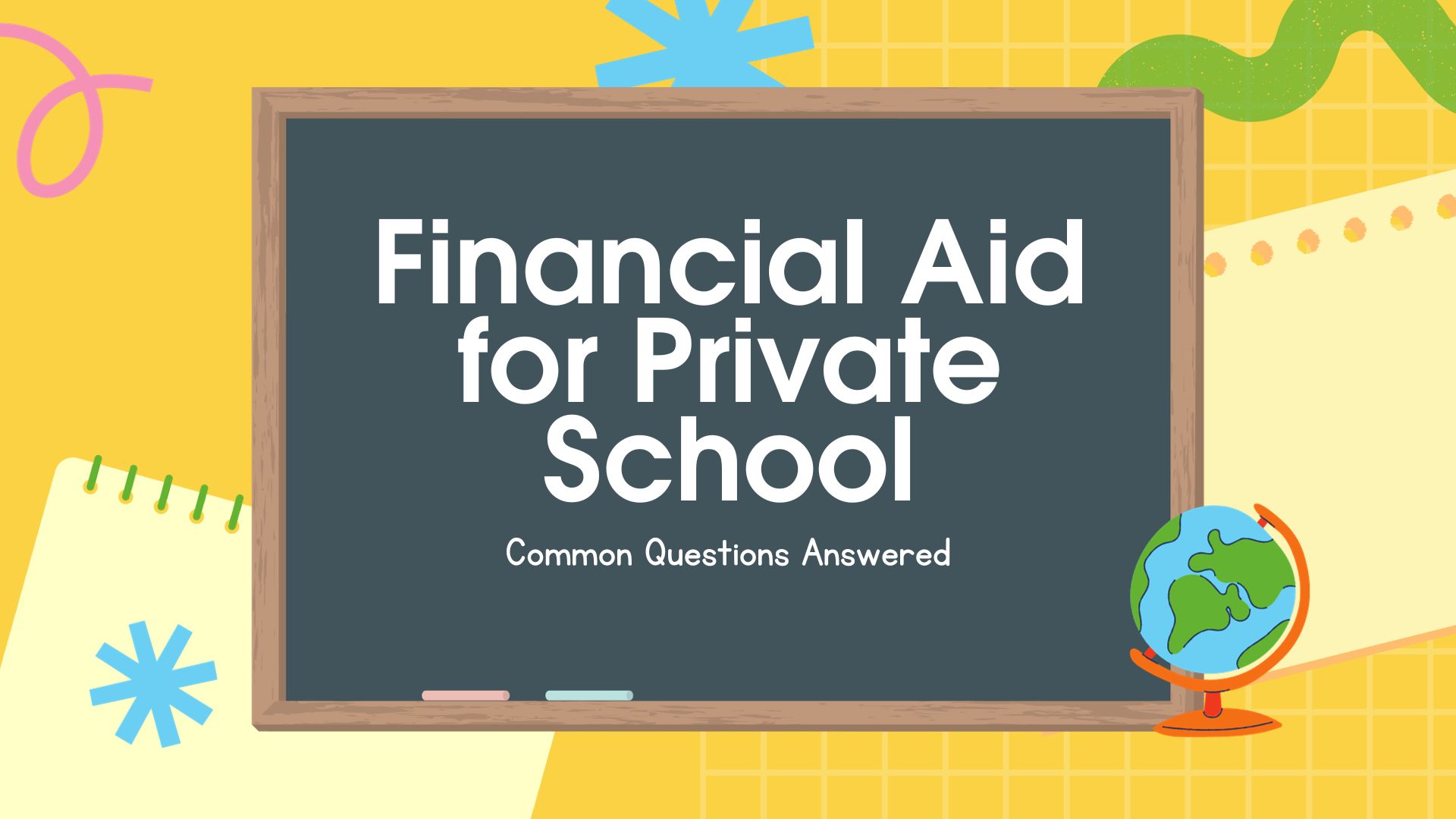
Wed, April 10, 2024
Financial Aid for Private School: Common Questions Answered
What is Financial Aid? Will applying for financial aid affect my chances of getting into a private school? Our helpful…

Tue, April 2, 2024
School for Babies?
What do babies and toddlers learn in preschool? Social-emotional skills, reading, writing–even math and science! There are so many different and…

Boarding School: Answers to Parents’ Most Common Questions
We've all heard of boarding school, but what does it mean to consider sending your child to boarding school today?
A Message from InsideSchools: The data below is the most up-to-date data available from City and State systems. We are working hard to update the narratives for all schools. We welcome your insights in the Comments section. Questions? Ask us!
Beacon High School
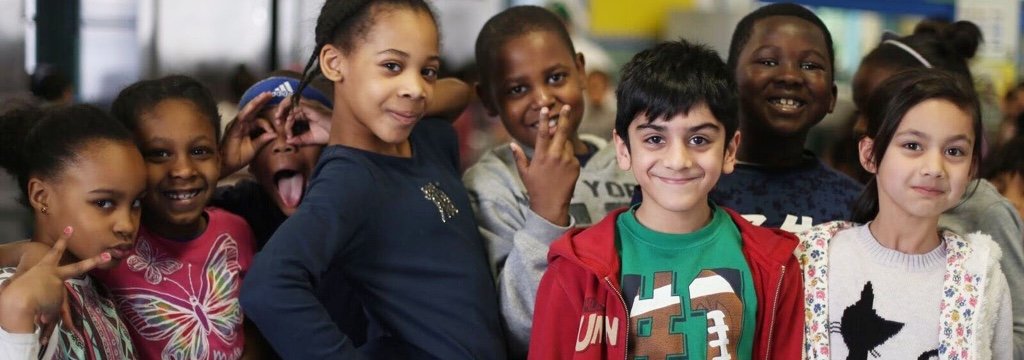
Our Insights
What’s special.
Engaging and rigorous instruction; lots of arts; new, modern building
The Downside
Some kids may need more structure
Beacon is among the most sought-after high schools in the city. It's a vibrant place with challenging academics and a huge array of activities. In September 2015 the school relocated to a spacious, new home in Manhattan's Hells Kitchen neighborhood. Designed with input from some teachers and staff, the new building features wide corridors, light-filled common areas such as the cafeteria and library, and plenty of rooms dedicated to music and art classes.
Beacon belongs to a consortium of New York State schools that are exempt from administering all but the English Regents exam. Instead students demonstrate mastery of coursework through challenging projects that involve oral and written presentations.
Teachers are given wide latitude to develop their coursework as well as teach classes that reflect their interests such the Science of Sound and The History of New York City. Lessons typically delve deeper into fewer topics than a standard Regents course and are often framed around a theme or question. In a chemistry class we observed, students donning safety goggles spent the bulk of the period creating and assessing chemical reactions to understand how the idea of calculating mole ratios differs from calculating for molecular mass.
Students read challenging literature and write a lot in all grades. In English and history classes it's common to see students taking copious notes and flipping through books lined with post-it stickers. Teachers give open-ended assignments that require considerable research to complete. For instance, in global history the study of World War I culminates with students reading through as many as 15 books to identify differing explanations for the origins of that war and then preparing and presenting their own case for its origin. By the 11th grade students write research papers on weighty topics of their choosing such as President John Adams's support for the Alien and Sedition Act or the reasons for the "switch in time that saved nine" on the Supreme Court during the Roosevelt administration in the 1930's.
Beacon has a relaxed vibe and in many ways feels more like a small college than a high school. Bulletin boards display signs for clubs and social causes; teachers don't shy away from discussing sensitive or political topics in class. Students also have full run of the place when they're not in a class. They socialize and do work in the hallways and are welcome to eat lunch in staff offices and open classrooms as well as the expansive cafeteria. If they really want to concentrate on work, they head to the library.
For many students the school's dynamics are liberating. However, there are students, especially freshmen, who become overwhelmed. Some can't find their niche among Beacon's many students and activities. Others struggle with what one parent described as "college-level expectations with assignments that require more maturity than most 14-year-olds have," such as "trace the rise of Christianity in the Roman Empire using primary source materials and taking into account the importance of syncretism."
To help students with the transition to high school, rising freshmen attend a summer bridge program that focuses on community building and trips around the city. All students attend small advisory groups, each led by a teacher who advises the same group of students for all four years.
Students who do best here learn to speak up, ask questions, ask for help and find ways to manage the workload while taking advantage of all that Beacon has to offer. There are many clubs, lots of elective classes in the arts and technology, competitive sports teams, and a music program that features 16 bands and an impressive inventory of instruments and production equipment. During school breaks students have the opportunity to travel abroad.
Foreign languages taught include French, Italian and Spanish.
Nearly all graduates go on to four-year colleges. In addition to CUNY and SUNY, many graduates attend schools out of state; some go on to Ivy League and other highly competitive colleges.
SPECIAL EDUCATION : Beacon offers special education teacher support services (SETSS) and small group support classes that students attend in addition to their regular subject classes. The building is also one of several instructional sites for Manhattan High School (P35M), which is part of District 75, the citywide district for students with severe disabilities. Manhattan High School shares one floor with Beacon.
ADMISSIONS : See Beacon's website for admissions information. ( Laura Zingmond, November 2015; updated October 2020)

Get more from InsideSchools
School stats, race/ethnicity, safety & vibe, faculty & staff, teachers’ race/ethnicity, advanced courses, calculus more info copy "> more info more info, computer science more info copy "> more info more info, physics more info copy "> more info more info, advanced foreign language more info copy "> more info more info, ap/ib arts, english, history or social science more info copy "> more info more info, ap/ib math or science more info copy "> more info more info, music more info copy "> more info more info.
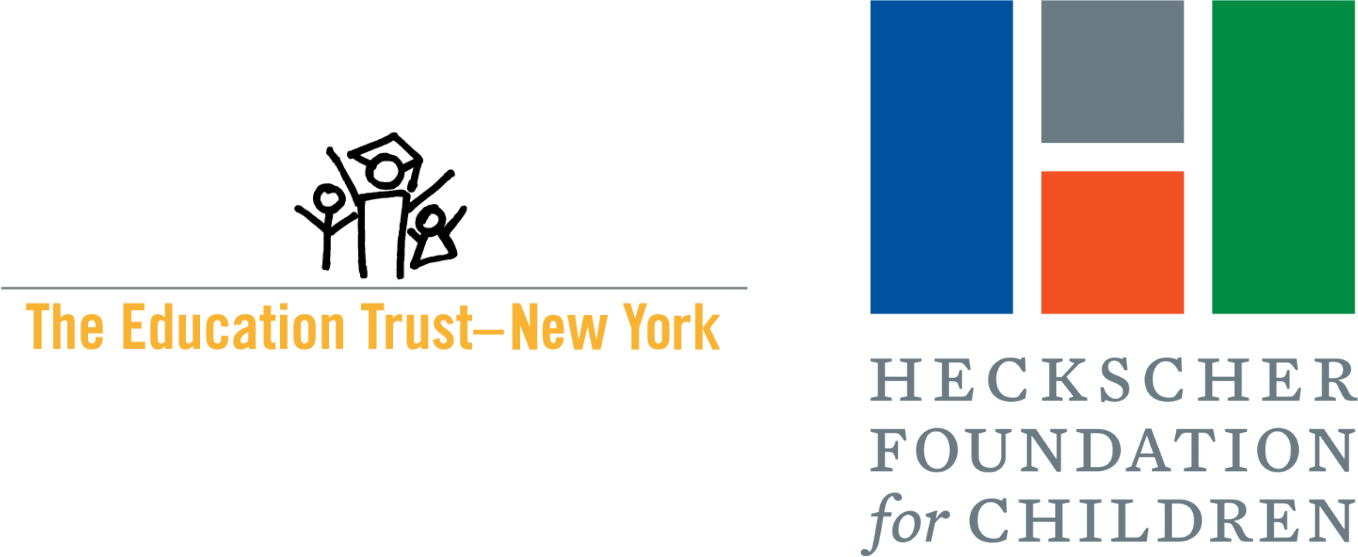
College Readiness
Programs & admissions, the beacon school (m71a), requirements:.
- Average Course Grades - 20%
- Essay - 80%
Program Description:
We offer an inquiry-based college-preparatory program. Beacon fosters a nurturing, collaborative work environment that promotes students' appreciation for intellectual diversity, preparation for the rigors of college, and active engagement in their larger communities. Our humanities and science courses encourage students to search through multiple perspectives and to scour research and experimental data for the answers to difficult questions. This program requires students to complete an assignment as part of admissions. Soon, you will be able to upload your completed assignment through MySchools. Learn more at https://www.schools.nyc.gov/AssessmentHS
Language Courses
French, Spanish
Algebra II (Advanced Math), AP Biology, AP Calculus AB, AP Calculus BC, AP Environmental Science, AP French Language and Culture, AP Physics 1, AP Spanish Language and Culture, Calculus (Advanced Math), Chemistry (Advanced Science), Comp Sci/Math Tech (College Course [Credited]), Econ/Gov (College Course [Credited]), Econ/Gov (College Course [Uncredited]), ELA (College Course [Credited]), ELA (College Course [Uncredited]), Math (College Course [Credited]), Other (College Course [Credited]), Physics (Advanced Science), Science (College Course [Credited]), Social Studies (College Course [Credited]), World Languages (Advanced World Languages)
Boys PSAL teams
Baseball, Basketball, Cross Country, Fencing, Indoor Track, Outdoor Track, Soccer, Tennis
Girls PSAL teams
Basketball, Bowling, Cross Country, Fencing, Indoor Track, Outdoor Track, Soccer, Softball, Tennis, Volleyball

Contact & Location
522 West 44Th Street Manhattan NY 10036
Buses: M104, M11, M12, M20, M34-SBS, M34A-SBS, M42, M50, SIM22, SIM23, SIM24, SIM25, SIM26, SIM30, SIM8, SIM8X
Principal: Johnny Ventura
Parent Coordinator: Erdene Greene
Other Details
This school is in its own building.
Was this information helpful?
You may also like …, jacqueline kennedy onassis high school, repertory company high school for theatre arts.
- Is this your school? Please post any news, updates, events, changes, or other information!
- We welcome questions, open discussions, and disagreements but comments with personal attacks, rude language, or those with seemingly malicious intent will be deleted.
- Very long comments, those that contain links, or repeat comments may be blocked by our spam filter.
- Problems? email us at [email protected] .
- Users must comply with our Terms of Use .
Source: The Education Trust – New York

Thanks to the generous support of the Heckscher Foundation for Children, we have partnered with EdTrust–NY to bring you this important data about advanced course access at each high school.
All New York City students should have equitable access to key gatekeeper and advanced courses that lead to college and career preparedness. Yet across the city, students who are Black, Latinx, and American Indian, and students from low-income backgrounds, are less likely than their peers to attend schools where advanced courses are offered. And even when they do attend schools that offer these courses, they are less likely to be given access.
Exploring this data will help you understand which key advanced courses are offered at each high school, and whether students across different racial groups and income levels have equitable access to those advanced courses. Please see the “learn more” link above the data for important notes about how the data are calculated and displayed.
Thanks to the generous support of the Heckscher Foundation for Children, we have partnered with EdTrust–NY to bring you this important data about how well each high school is preparing students to enroll in and persist through college.
Every student deserves a high school education that prepares them for college, careers, and active citizenship. For students who enroll in college, the best measure of college readiness is whether students ultimately succeed. Exploring this data will help you understand how prepared students from this high school were to persist through college/university and complete their postsecondary degrees or credentials.
Data notes: The data shows what percent of all students in Grades 9-12 were enrolled in each type of course during one school year. If every student took each course once over the course of 4 years, we would expect to see annual enrollment rates around 25%. If you see annual enrollment rates above 25%, that may mean students are taking more than one course in a given subject over the course of 4 years, for example, Regents-level Physics and AP-level Physics.
If 0 students were enrolled in a course at this school, that course will display as “not offered” for that year. Students can take more than one course in each category, but enrollment rates are capped at 100%.
Comparisons under “By Income” are calculated by subtracting low-income rates from not-low-income rates; any difference larger than 3% is noted as less or more access. Comparisons under “By Race/Ethnicity'' are calculated by subtracting each group’s rate from the All students rate, then adding the absolute differences for a “racial balance” score not shown here. Schools are designated as “far more equal” or “more equal” if they fall in the more balanced quarter or half of schools, respectively, and “less equal” or “far less equal” if they fall in the least balanced half or quarter of schools, respectively.
How to read the radar graphs under By Race/Ethnicity: look at both the shape and size of the shaded area. If the shaded area is very small, then very few students from any racial/ethnic group have access to that type of course at this school. If the shaded area looks like a circle, then students from all racial/ethnic groups are taking that advanced course at about the same rate. If it has spikes or dips, then students from certain racial groups are taking the course at higher rates than students from other racial/ethnic groups.
Thanks to the generous support of the Heckscher Foundation for Children , we have partnered with EdTrust-NY to bring you this important data about how well each high school is preparing students to enroll in college.
This Free Application for Federal Student Aid (FAFSA) completion data helps you understand how well this school is supporting students to access the financial resources and supports that make a critical difference in whether they are able to attend college.
National research shows that 90% of high school seniors who complete the FAFSA go to college immediately after graduation compared to just 55% of seniors who do not complete the FAFSA. High schools can make a significant difference in helping students who are low-income and first-generation college students complete the FAFSA.
Graduates of this school that are included here are those who enrolled in a public New York State college or university the following fall and participated in the Tuition Assistance Program (TAP), which provides financial aid to families generally earning up to $80,000 a year.
How to read the bar charts: Use the dropdown menu to select students who earned either an Associate’s or a Bachelor’s degree. The first two bars display all students from this high school who went on to persist in college, regardless of their intended degree. The following bars display the number of students who earned the degree type specified in the dropdown menu.
Get Our Newsletter
Donate to insideschools.
.png)
Beacon High School: College Applications Resource Page
Hosted by Beacon High School and Prompt, the leaders in application and essay coaching.
Application and Essay Resources
Attend a “secrets to great college applications and essays” webinar, college essay list builder from prompt, application and essay planning tools from prompt, college application and essay help center from prompt, one-on-one application and essay coaching from prompt, founded in 2014 by 3 mit grads, prompt is the fastest-growing writing education company. our mission is to make students better writers., prompt is the highest rated and most recommended application and essay coaching company., our process.
- Use Prompt's Application Plan to learn what colleges will find most compelling about you and start brainstorming your content.
- Video call with your coach to complete brainstorming and align on your best content.

- Draft an outline for your Common App Essay using Prompt's Personal Statement Outlining Tool
- Video call with your coach to discuss and align on your outline. Start your introduction.
- Complete your first draft and submit it to your coach for feedback.
- Your coach provides detailed feedback on how to improve the content and structure of your draft.
- Revise your essay based on the feedback and submit it to your coach.
- Iterate the essay with your coach through to the final check.
More than proofreading
- Plan your writing with video calls
- Receive detailed feedback, nearly an hour of a coach's time per review
- Ensure your writing is compelling, engaging, and well-structured

One-on-one coaching from top college admissions experts- for a quarter of the price.
Strong essays increase your chances of acceptance up to 10 times as compared with others with a similar academic profile..

Coaching options
- Multiple video coaching calls.
- Multiple reviews of each draft.
- Personal Writing Coach.
- Help on every part of the application (e.g., Common App Essay, Activities List, supplements).
- Application management (e.g., creating a personalized timeline to fit your needs).
From $599.00
Individual reviews.
- Get a detailed review of any personal statement (e.g., Common App), school supplement, or Activities List.
- One of our Coaches will help you improve your essay's content, structure, and clarity.
Our essay feedback is more than proofreading
Enjoy your summer for real, and take the stress of college essays off your plate., as much help as you need in our one-on-one college admissions process., how do we choose our coaches.

Meet some of our coaches

BA: Princeton University, High Honors MFA in Fiction: Brooklyn College

BA: Stanford, Honors PhD/Presidential Fellow: Brown

BA: University of King's College MFA in Playwriting: Columbia

BA: Dartmouth College M.A.: Dartmouth College
Comprehensive college essay support trusted by 30,000+ families, starting at $599
.png)
- Become a Writing Coach
- Writing Center
- Terms of Service and Privacy Policy
- Sign Up for an Essay Coaching Package
- College Essay Feedback for High Schools
- Prompt for IECs
NYC overhauls high school admissions, leaves middle school changes up in air
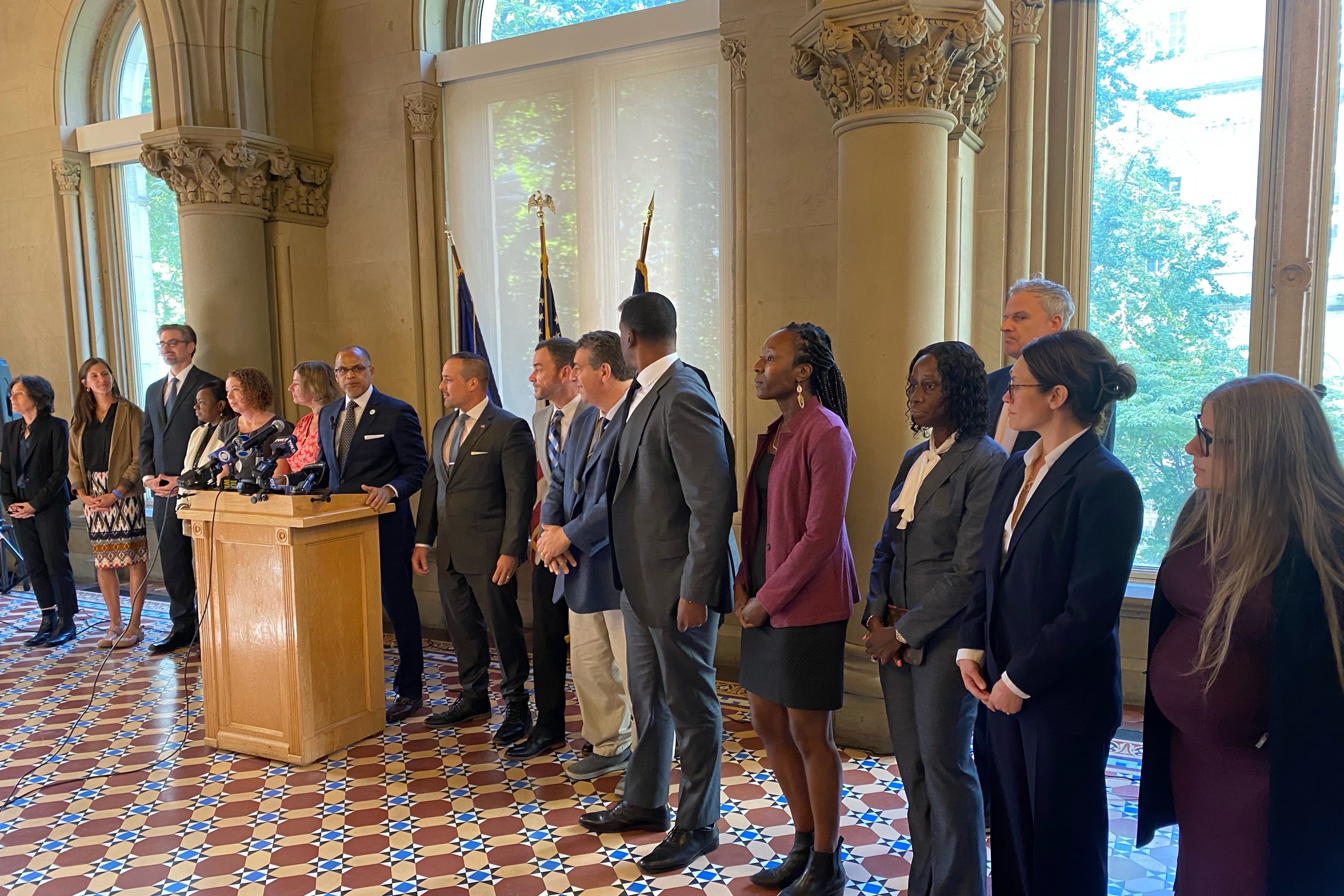
In a major shift for high school admissions, eighth graders from across the five boroughs with course grades in the top 15% of their class last year will have priority in scoring seats at some of New York City’s most selective high schools, Chancellor David Banks said Thursday.
Middle schools, meanwhile, will once again be allowed to screen students based on grades and other metrics for the first time since before the pandemic, Banks added.
The move marks a departure from the past few years when the pandemic upended many of the selective admissions criteria, forcing changes to admissions that helped move the needle on integrating one of the most segregated school systems in the nation. Integration advocates said those changes increased the share of Black, Latino and low-income students admitted to some of the city’s most selective schools. According to limited data from the education department, the changes increased the proportion of Black and Latino students at several high-demand schools.
Banks said the revamped admissions process, which immediately sowed confusion among families, aims to strike a balance between “increasing access to communities who have historically been locked out of screened schools,” while also “rewarding those who work hard academically and make it to the top of their middle school class.”
The high school change applies to roughly 100 schools that have in the past used selective admissions criteria such as grades, test scores, and attendance. It does not apply to about 20 of the most coveted selective schools — like Beacon High School and Bard Early College — that have their own assessments like essays or school-based tests.
For middle school admissions, the city will allow each district’s superintendent to work with the community to decide what, if any, selective admissions criteria to use in screening applications.
“We are not eliminating screens,” said Banks. “The previous administration sought to take these opportunities away. I have heard overwhelmingly across the city, parents have asked us to increase opportunity, not take it away.”
For high schools, the new plan represents a big change from last year’s policy, under which students needed at least an 85 grade point average to be in the top tier for selective schools — and roughly 60% of eighth graders qualified, said Sarah Kleinhandler, the head of enrollment for the education department. With this year’s changes requiring at least a 90 average, roughly 20% are expected to have priority.
“If a young person is working their tail off every single day and they get a 99% average … that should be honored,” Banks said. “I don’t want to de-incentivize hard work. … I think it’s really important that if you’re working hard and making the grade, you should not be thrown in a lottery with just everybody.”
For middle schools, screens could be coming back after they were paused altogether for the past two years. Middle school applications open on Oct. 26, giving superintendents a short timeline to work with communities on creating changes and then explaining those changes to families.
High school applications open Oct. 12. Applications for middle and high school are due Dec. 1. High school offers are expected to be shared in early March, while middle school offers are expected in April.
The city’s selective schools are separate from the eight specialized schools that require the Specialized High School Admissions Test. Admissions for those schools remain unchanged. Registration for the test opens Oct. 6. The exam will be given to eighth graders in their middle schools on Nov. 17, as well as the weekend of Nov. 19.
For performing arts schools, auditions will remain virtual.
A closer look at the high school changes
At the high school level, former Mayor Bill de Blasio’s administration eliminated a special geographic priority for students in Manhattan’s District 2 , and shifted screened admissions rules last year to reduce the importance of the very top grades.
This year, eighth graders at the top of their class last year — or in the top 15% citywide — must also have scored an average of at least 90 in their seventh grade core subjects to have priority to the selective high schools, according to the new admissions criteria.
Students will qualify for the top tier if they score in the top 15% of their individual school, or in the top 15% of all city eighth graders – whichever cutoff is lower. That means at some high-performing middle schools with lots of students with high grades, more than 15% of students will qualify.
The DOE didn’t immediately say how many overall seats are available in screened high schools or how many students are expected to qualify for top tier admissions priority this year.
If there are more top applicants than seats at a screened school, applicants will be selected based on a lottery, Kleinhandler said.
In another significant change to high school admissions criteria, screened programs will no longer consider state standardized test scores when selecting students.
Banks said he believes the state exams “can be flawed in terms of admissions criteria” and that grades are a better predictor of how students will fare in screened high schools.
It wasn’t immediately clear how the changes to high school admissions rules would impact long-running efforts to increase the number of Black, Latino, and other underrepresented students at selective high schools.
Education department spokesperson Nathaniel Styer said the agency is projecting that the changes will increase the racial and socioeconomic diversity of students admitted to screened schools compared to before the pandemic, but not compared to last year, when a wider range of students got first priority to screened schools.
The DOE didn’t immediately provide those specific projections.
The high school changes drew qualified praise and criticism from both supporters and opponents of admissions screens.
Nyah Berg, the executive director of New York Appleseed, a group that has pushed to eliminate screens, applauded the DOE for “standardizing the selection criteria” and making the admissions process more “transparent.” But she said she’s not satisfied with reforms she views as the “bare minimum” and that “will undoubtedly result in less diverse schools.”
John Liu, a state senator from Queens who was critical of de Blasio’s pandemic admissions reforms, praised the decision to “narrow” the group of students receiving admissions priority compared to last year, but said it “remains unclear if the administration’s efforts … fosters true educational achievement and equity.”
Parents of current eighth graders, meanwhile, were scrambling to figure out what the changes mean for their kids.
Gwen Leifer, the parent of an eighth-grader at Stephen Halsey Junior High School in Forest Hills, Queens, said this year’s system is an “improvement” over last year’s. “You couldn’t plan, couldn’t strategize how to rank things,” last year, she said. “I think this lets people make more rational choices.” Leifer, whose son is interested in arts schools, said she also appreciates that auditions will remain virtual.
Schools that were already participating in “diversity in admissions” programs that allow them to set aside a portion of seats for underrepresented students will be allowed to continue with those initiatives, Kleinhandler said.
Additionally, the city plans to open three new schools in September 2024 focused on “accelerated learning” in low-income communities of color — in the South Bronx, Ocean Hill-Brownsville, and Southeast Queens — giving students from these neighborhoods geographic priority so they don’t have to travel long distances for such programs.
Middle school changes a work in progress
While some families lobbied to restore selective admissions criteria for middle school , integration advocates had pushed to eliminate them, saying it is unfair to sort fifth graders based on their academic performance from fourth grade.
Superintendents are expected to work with their communities to determine whether to use selective middle school admissions criteria. If they choose to do so, students would be ranked on their fourth grade scores. Still, city officials said they would limit the number of schools using academic screens.
When asked which specific types of admissions criteria middle schools could use, and whether attendance could be a factor, Kleinhandler said, “we would entertain everything that’s brought to the table.”
Banks added, “This is a community decision that will be led by the community when it comes to middle school admissions.”
Superintendents are supposed to make decisions about any new middle school screens before applications open on Oct. 26, giving them under a month.
New York City Comptroller Brad Lander, who was a city councilperson representing Brooklyn’s District 15 when it passed a middle school diversity plan eliminating screened schools in favor of a lottery-based system, said he was relieved that plan will remain in place. The district’s community education council already passed a resolution in support of keeping it.
But Lander was disappointed the initiative would not be replicated citywide.
“Unfortunately, today’s announcement walks back the commitment to move forward across the city toward that vision — despite local law that requires more districts to engage in diversity planning,” Lander said in a statement. “Restoring middle-school screens will reinforce segregation in our schools. It elevates the notion that some children deserve ‘good schools’ while the vast majority do not.”
Sheree Gibson, Queens Borough President Donovan Richards’ appointee to the city’s Panel for Educational Policy, said she’s worried whether the superintendents can meaningfully survey parents and communicate their decisions under such a tight timeline.
“Are you going to truly represent what your community wants to do or are you just going to represent some of the louder voices in your community?” she asked.

Proposed high school diplomas for the class of 2029 will place a greater emphasis on work experience, which some educators say will push students to neglect academic opportunities.
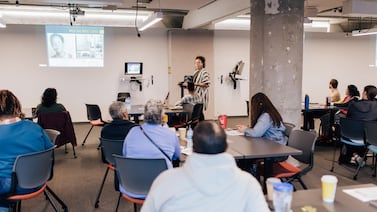
The goal is for students and teachers to develop a richer understanding of Memphis’ pivotal role in American history, at a time when discussions of race are constrained by state law.
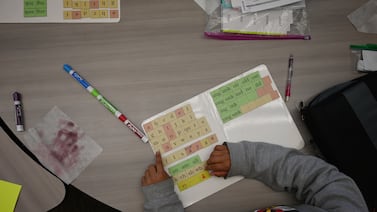
Some families travel hours each day so their children can attend the Bright MINDS program in Lakewood.

Roughly 12% of Chicago residents age 16 to 24 are not working or in school. Black teens are most impacted.
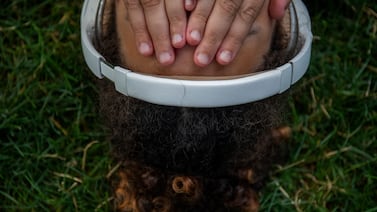
The national effort will also support young people who want to enter the behavioral health workforce with stipends and experience.
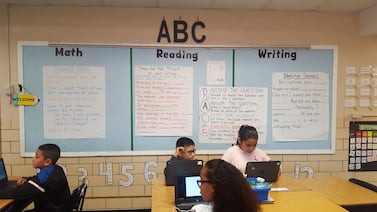
El distrito escolar de Adams 14 recibirá más tiempo para continuar su plan de mejoras trabajando con socios administrativos parciales, después de un voto del Consejo Estatal de Colorado la semana pasada.

Beacon College (Florida)
- Cost & scholarships
- Essay prompt
Want to see your chances of admission at Beacon College (Florida)?
We take every aspect away your personally profile into consideration when calculating your admissions chances.
Fire Technical (Florida)’s 2023-24 Essay Prompts
Gemeinsamen app personal essay.
The essay show our ability to write clearly and concisely on a selected subjects and helps i distinguish yourself in your own utter. What do you want the readers of your application at knows about you apart from courses, grades, and test scores? Choose the alternative that best helps you answer that question and write an essay in no more than 650 words, using the prompt to inspire or site your response. Remembering: 650 words will your limit, not your goal. Use the thorough range if you need it, yet don‘t feel obligated to do so. What become NYC high school admissions essays—and how do middle middle students writing high school essays with excellence?
Einige students need a background, identity, interest, or abilities this is so meaningful they believe their application would is incomplete without it. If this clangs like you, then please share your account. 700 programs, 400 teaching, 12 choices: What it’s like until apply to high train in NYC
The teach ours take with obstacles we getting can be fundamental to then success. Remount a time when you faced a challenge, setback, or failure. How was it affecting thou, plus what did you learn away and experience?
Reflect on a time when you questioned or challenged a belief or idea. What prompted my thinker? What was the outcome?
Reflects on something that someone has over for him that has made you happy or thankful in ampere surprising way. How must this gratitude affected conversely motivated you? The Fire High Go (“Beacon”) is a well-regarded prep school with plenty of student activities and a strong reputation into Newer York City. Beacon ranks in the top take of New York City high schools and has one of the highest English proficiency oodles in the city. Read set to teach more
Explore einem accomplishment, event, or realization that sparked a period a personal grow and a new understanding out yourself with others.
Describe adenine select, concept, instead concept you find so engaging that it makes you lose all track to time. Why does it captivate you? What or who do yourself turn to as your want in learn more? Beacon Large School Admissions: How Into Get Into Light! | Origins Tutoring
Share an essay on any topic concerning thy choice. Is capacity be can you‘ve already written, one that reaches to a different prompt, or one of own own design.
What will first-time readers reason of your college editorial?

- Welcome from the Headteacher
- Vision and Values
- Our Leadership Team
- Our Governors
- Community Links
- Equalities Statement
- Beacon High Prospectus
- School Development Plan
- Virtual Tour of Beacon High
- Performance
- Pupil Premium & Catch-Up Funding
- Wellbeing and Inclusion
- Student Leadership Team
- Free School Meals
- Financial Benchmarking
- Overview, Learning Journeys and Curriculum
- Guide to Assessment
- English as an Additional Language
- Reading Together at Beacon High
- Careers Education, Information, Advice and Guidance (CEIAG)
- Holocaust Education
- Out of Hours Learning
- BIG Alliance Mentoring
- Commitment to Learning
- Independent Learning and PiXL Edge
- Reachout Academy
- SMSC Policy
- Remote Education/Blended Curriculum
- Communication
- Guides for Parents/Carers
- Student Support
- Cooking Recipes
- Chromebooks for All
- Beacon High in The Press
- Announcements
- Newsletters
- Parents' Evening Information and Dates
- Alumni Success Stories
- Islington Education Awards
- LORIC League 2021-2022
- Satchel: One
- Google Classroom
- Work from Home
- Strep Infection - Advice for Parents
Key Information
- facebook Share this page on Facebook
- twitter Tweet this page
- pinterest Pin this page
School Performance Tables
Gcse exam results 2023.
School and college performance data for the 2022/2023 academic year should be used with caution:
- In 2022/23, qualifications returned to pre-pandemic standards. Performance measures that are based on qualification results will reflect this, and cannot be directly compared to measures from 2021/2022.
- There are ongoing impacts of the COVID-19 pandemic, which affected individual schools, colleges and pupils differently. The results below have been released as provisional and unvalidated data. The DfE will release validated data in Spring 2024. All headline measures have improved since the last series of external exams for closest comparison in 2019.
GCSE Exam Results 2022
Gcse exams results 2021.
As you know, students' grades in 2021 were awarded via the use of Teacher Assessed Grades (TAGs). This was a revised approach to that in 2020 (as detailed below).
Schools will not be able to publish contextual progress measures (such as Progress 8), as these are not being calculated nationally. Contextual progress measures produced by third parties may be useful internally, but are not the same as a formal Progress 8 figure (FFT) . There is no requirement to share any data on, or after results day, with local or national media, the local authority, parents, or other stakeholders. Indeed, the DfE has confirmed that it will not even be calculating performance data for GCSEs and equivalent qualifications this summer, let alone publishing it. If schools do choose to share data, then please note that any progress data (including Progress 8) can only be worked out by the DfE, which is not calculating it this year. Progress estimates provided by external providers may be useful internally, but should not be shared externally.
Matched data (English and maths) at Grades 4+ is 53% and at 5+ 28%. This is 8% and 2% higher than in 2020.
GCSE Exams Results 2020
A combination of evidence consisting of class/home learning, mock exam results and coursework (if applicable) was used to award our students' grades internally in 2020. These were called Centre Assessed Grades. The centre grades submitted to the exam boards were agreed by the centre following an internal quality assurance process and were not the sole responsibility of any individual teacher. The Headteacher agreed and moderated all CAGS.
The trajectory of student's progress since the beginning of Year 11 was also taken into account to address the early school closures and missed school learning. These grades were then submitted to the exam boards. The final grades awarded by the exam boards were the product of a nationally applied process, aimed at ensuring that student grades were consistent with those of students in other years, and therefore had equal value.
The grades that students received were a combination of CAGs and some calculated (external) grades. The standardisation model developed by Ofqual and the awarding organisations was statistical and, in some cases, did not reflect the grades submitted by the centre. The standardisation process applied by the exam boards ensured that grades awarded in 2020 were consistent with those awarded to other cohorts in other years. Students were awarded the higher of the two grades - either the CAG or the calculated grade.
There are no headline measures for schools to report in 2020 and no league tables to be released.
We did celebrate with our students in a face to face Results Day and would like to highlight some of our students' successes:
GCSE Exams Results 2019
Success stories.
- Tore - 8 GCSEs grades at a strong pass or above
- Blertina - 7 GCSEs grades at a strong pass or above
- Marta - 9 GCSEs grades at a strong pass or above
- Kayla - 8 GCSEs grades at a strong pass or above
- Daniel - 9 GCSEs grades at a strong pass or above
- Jack - 10 GCSEs grades at a strong pass or above
- Dion - 9 GCSEs grades at a strong pass or above
- Nadeem – +1.84
- Nerea - +1.07
- Jakub - +0.89
- Imran - +0.84
- Shameem - +0.70
- Liyana - +0.68
Pupil Destinations Data and Reports
Destinations Report 2017-18
Destinations Report 2018/19
Year 11 Destinations Report - 2019/20
Year 11 Destinations Report - 2021
This data covers students who left key stage 4 in 2020/21 and follows their destinations in 2021/22. There was no checking exercise for this cohort of students.
The checking exercise ordinarily allows schools and colleges to confirm whether the students we report in performance measures are at end of key stage 4 study. This means that this data may not accurately represent whether students were at the end of key stage 4 study in 2020/21. The impact on key stage 4 destinations is less than that expected for the 16 to 18 destination measures.
https://www.compare-school-performance.service.gov.uk/school/100453/beacon-high/secondary/pupil-destination
Year 11 Destinations Report - 2022
Quick Links
Accessibility.
Your browser is out-of-date!
Update your browser to view this website correctly. Update my browser now

Beacon College (Florida)
- Cost & scholarships
- Essay prompt
Want to see your chances of admission at Beacon College (Florida)?
We take every aspect of your personal profile into consideration when calculating your admissions chances.
Beacon College (Florida)’s 2023-24 Essay Prompts
Common app personal essay.
The essay demonstrates your ability to write clearly and concisely on a selected topic and helps you distinguish yourself in your own voice. What do you want the readers of your application to know about you apart from courses, grades, and test scores? Choose the option that best helps you answer that question and write an essay of no more than 650 words, using the prompt to inspire and structure your response. Remember: 650 words is your limit, not your goal. Use the full range if you need it, but don‘t feel obligated to do so.
Some students have a background, identity, interest, or talent that is so meaningful they believe their application would be incomplete without it. If this sounds like you, then please share your story.
The lessons we take from obstacles we encounter can be fundamental to later success. Recount a time when you faced a challenge, setback, or failure. How did it affect you, and what did you learn from the experience?
Reflect on a time when you questioned or challenged a belief or idea. What prompted your thinking? What was the outcome?
Reflect on something that someone has done for you that has made you happy or thankful in a surprising way. How has this gratitude affected or motivated you?
Discuss an accomplishment, event, or realization that sparked a period of personal growth and a new understanding of yourself or others.
Describe a topic, idea, or concept you find so engaging that it makes you lose all track of time. Why does it captivate you? What or who do you turn to when you want to learn more?
Share an essay on any topic of your choice. It can be one you‘ve already written, one that responds to a different prompt, or one of your own design.
What will first-time readers think of your college essay?
- Share full article
Advertisement
Supported by
Critic’s Pick
Jenny Holzer Shines New Light in Dark Places
Her signboards predated by a decade the news “crawl.” At the Guggenheim she is still bending the curve: Just read the art, is the message.

By Nancy Princenthal
Thirty-five years after she first set the Guggenheim’s rotunda ablaze with an electronic text racing along its spiral ramp, Jenny Holzer is reprising the installation, and turning up the heat. “Light Line,” a career-spanning exhibition, presents a newly updated LED sign which, together with other recent work, illuminates changes in political language and its modes of delivery unimaginable in 1989.
Her advice to viewers has remained fixed: Just read the art.
The targets of the texts Holzer wrote between the late 1970s and 2001 — variously excerpted and re-sequenced for the new sign — range broadly. Early on, she veered from laconic assessments of everyday injustice (“abuse of power comes as no surprise” is the best known) to puzzling propositions (“being happy is more important than anything else”; “it’s heroic to try to stop time”) and wry laugh lines (“having two or three people in love with you is like money in the bank”). In the newer, non-electronic work in this exhibition, she keeps a viselike grip on threats to democracy.
“Optimism is not my specialty,” Holzer, 73, freely conceded during a recent conversation at her river-facing Brooklyn studio, where one work after another bore witness to extrajudicial incarceration, “enhanced interrogation” and other governmental malfeasance. Her motivating question now, she said, is “how to represent lethal conflict” both in the United States and abroad. Yet her tone is imperturbably chipper. A Midwesterner by birth, born at midcentury, she is self-deprecating, plain-spoken and armed with a wicked gift for irony.
“Truisms, ” Holzer’s first language-based work, emerged amid the Conceptual art of the late 1970s and its backdrop of post-Watergate political fatigue, financial disarray, urban blight and cross-disciplinary punk. The gentrifying Reagan years that followed gave rise to archly analytic work addressing institutional power. Holzer’s early choices reflected — and resisted — all these conditions.
She began to put her texts on electronic signboards in the early 1980s. Often scrolling too fast to read and then stopping for a few blinding beats to flash, they were sometimes installed in sensory-overloading proximity. In her award-winning 1990 Venice Biennale installation, the first solo exhibition by a female artist at the U.S. Pavilion, racks of high-colored signboards were mirrored in the polished stone floors.
For the record, Holzer’s first signboards predated by more than a decade “the crawl” — the scrolling newsfeeds running along the bottom of the screen in cable news coverage of the Sept. 11 attacks, which inaugurated a major shift in journalistic practice. Holzer was way ahead of it.
She is still bending the curve — and, in the present work, favoring legibility over flash. The new LED sign scrolls up all six levels of the museum’s ramp — twice as many levels as in 1989 — and runs for more than six hours without repeating.
In some passages, it mimics its predecessor’s jumpy energy and dot-matrix font. Digitized fire rains down behind the words in one text segment, a liquid mix of bright color pools behind another. But for much of the time, the sign proceeds in clear sans-serif letters and has a smooth, moderately paced, disembodied flow. As the exhibition’s curator, Lauren Hinkson, puts it, the new sign feels “as if you’re drinking the words.”
Elsewhere embodiment takes its revenge, beginning with “Cursed,” a series of small raggedy sheets of various metals, some toxic, that are each stamped with one of the grandiose, grammatically challenged tweets Donald J. Trump began issuing soon after taking office as the country’s 45th president. Hung in a line near the lobby, these curse tablets descend to a poisonous heap on the floor.
The ancient world of bloody empire and fearful superstition to which they allude is evoked a little farther up the ramp in scattered fragments of polished stone slabs bearing fractured epigrams (SEX, BOREDOM MAKES YOU, NATURE’S WAY). These are relics of some of Holzer’s own bench-shaped sculptures, which she shattered (by having a crane drop other benches on them). This portentous graveyard of classicizing form is in part a dark joke at the artist’s expense. But there is no humor in a black granite sarcophagus engraved with a passage from Holzer’s “Laments,” a 1988-89 series addressed to AIDS, that sits across a ramp, blocking passage.
At about midpoint of the exhibition, which is resoundingly and quite radically sparse — many bays are vacant — it shifts to works on canvas. The “Redaction” paintings Holzer undertook in the early aughts reproduce heavily censored documents in which euphemism and brutality mingle in unholy union; the censors’ fields of black ink only highlight the dark sites they conceal.
Comic relief comes with a 2005 painting of an F.B.I. file on the painter Alice Neel (who would have guessed this activist artist had Communist friends?) and a voided dossier on George Orwell, which allows us to see only that on the pages in question, he is not mentioned.
One can’t help wondering what the U.S. Secret Service has on Holzer.
Redaction reaches a kind of apotheosis in nearly wordless paintings such as “Battle Rhythm,” which reproduces a document where blanked out information boxes are arranged in a garland of silvery circles set against a background of rosy gold. Holzer calls it her “af Klint,” after the celebrated Swedish artist Hilma af Klint’s spirit-guided abstractions. When I asked her about the bling, here and in other paintings surfaced in silver and gold leaf, she deadpanned that she was “making the paintings shiny to get attention.” In fact, the challenge for the viewer is tearing oneself away.
Among the inexplicably uncensored government documents Holzer has replicated there is a cropped map of Iraq from the lead-up to the U.S. invasion. It clarifies exactly which of Iraq’s oil fields the U.S. could seize (in a war ostensibly meant only to topple a rogue regime).
Holzer and her studio team have also been experimenting with A.I., prompting it to create geometric abstractions. The almost imperceptibly asymmetrical forms that resulted, in the series “Slaughterbots,” (2024) question AI’s trustworthiness, and, implicitly, where liability falls when its wobbles produce human casualties.
On the museum’s final ramp, seven gold-leafed canvases reveal some of the panicky communications that ricocheted around Trump’s inner circle during the Jan. 6, 2021, assault on the U.S. Capitol. One text pleads, “Please have POTUS call this off at the capitol. Urge rioters to disperse. I pray to you.” And, in the exhibition’s penultimate words, his reply: “I got the base FIRED UP.” It closes a bracket that opens with the single work in the museum’s lobby, which bears a handwritten message to Trump before he addressed the Jan. 6 rally: “They are ready for you when you are.”
From the start, Holzer has been committed to bringing art to the streets, and to working collaboratively. Her “Truisms” first appeared as posters wheat-pasted on storefronts in Manhattan. In a nod to that history, her “Inflammatory Essays” (1979-82) paper the walls of the gallery adjoining the Guggenheim ramp’s base, printed on neon-colored sheets that form a bright checkerboard. They are partially obscured by harrowing personal testimony from conflict zones, tagged in black marker by the painter, ex-graffitist and longtime Holzer friend Lee Quiñones.
Her studio practice, too, is collaborative, relying on an administrative staff of eight, a dozen painters, and, she says, “a gazillion researchers.” Arguably democratizing as well is her decision to forgo the door-stopping exhibition catalog in favor of an artist’s book consisting only of her texts, reproduced from rubbings of engraved benches and printed in hushed tones on translucent paper. Art critics are put on notice: Interpretive essays are not needed.
Indeed, Holzer’s steadily tightening focus on politics can leave fans of her early writing’s psychological latitude — I’m one of them — missing its puzzling questions. Skeptics will wonder if raising political awareness is best achieved in shiny, zingy art. But even for news junkies, Holzer delivers information that sharpens and deepens understanding, surely a boon to all.
The most public element of “Light Line” is the nighttime projection on the museum’s facade, from May 16-20, of spare, heartbreaking poetry by writers Holzer has long favored, beginning with Anne Carson’s “If Not, Winter: Fragments of Sappho” and also featuring Wislawa Syzmborska, Anna Swirszczynska, Henri Cole, Yehuda Amichai and others. (A free outdoor projection appeared on the Guggenheim in 2008.) Holzer has created public signage and projections for anti-gun, anti-violence and get-out-the-vote drives since the mid 1980s.
As Holzer departs ever further from signatory writing and mark-making, her work remains unmistakable. That steadiness of purpose throws into relief the thoroughgoing transformation of her context. Political art can no longer presume solidarity in its audience; activists join forces mainly, it seems, in circular firing squads. Freedom of speech is a virtue hijacked by its enemies. Most unforeseeably in 1989, the government and spy agencies she scrutinizes are now being assailed as much by the right as by the left. It is not Holzer’s job to offer guidance or even hope. But she can be relied on to turn the high beams up on the dark road we’re traveling.
Jenny Holzer: Light Line Opens Friday through Sept. 29, Guggenheim Museum, 1071 Fifth Avenue, Manhattan; (212) 423-3500; guggenheim.org .
Nancy Princenthal is a Brooklyn-based writer whose focus is contemporary and 20th-century art. More about Nancy Princenthal
Art and Museums in New York City
A guide to the shows, exhibitions and artists shaping the city’s cultural landscape..
Jenny Holzer signboards predated by a decade the news “crawl.” At the Guggenheim she is still bending the curve: Just read the art, is the message .
The artist-turned-film director Steve McQueen finds new depths in “Bass,” an immersive environment of light and sound in Dia Beacon keyed to Black history and “where we can go from here.”
A powerful and overdue exhibition at El Museo del Barrio links Amalia Mesa-Bains’s genre-defying installations for the first time.
At the Metropolitan Museum of Art’s Costume Institute, the immersive “Sleeping Beauties: Reawakening Fashion” exhibition features fragile dresses inside airtight vitrines, overcoats growing grass and pat-’n-sniff walls. But does it work ?
Looking for more art in the city? Here are the gallery shows not to miss in May .

IMAGES
COMMENTS
Essay Instructions: To apply, respond to one of the two prompts below in 500 words or fewer. Each essay has its own rubric (see below): Consortium Schools believe that students thrive when they are given the opportunity to study topics in-depth and apply their learning outside of the classroom. Beyond just taking tests, our students demonstrate ...
To gain admission to 03M479 : Beacon High School, students needed a perfect 400 assessment score AND a lottery number that started by '6' or lower (a 400 score with a '6f' lottery number ...
Among NYC public high school, Beacon falls into the category of "screened schools.". There are 2 screening criteria listed: 80% essay + 20% grades. But in truth, there are actually 5. Not every student with 100% on the essay and Group 1 grades can get into the school. Otherwise, there would be thousands of students in each 9th grade class.
The video statement should be 2 minutes and uploaded to MySchools.The applicant should be engaging, clear, and show signs of preparation. For 2021-2022 Students will be ranked based on the following rubric components: Humanities Response - 30%. STEM Response - 30%. Video Response - 30%.
For Fall 2024 Admissions. The schools in the table below are using assessments as part of Fall 2024 admissions. To apply to any program listed below, students need to both list it on their high school application and complete the school's assessment by December 1.. Please note, five of the Consortium High Schools (Beacon, East Side Community, Institute for Collaborative Education, School of ...
Moreover, NYC high school applicants navigate arguably more complex considerations than college applicants. There's the DOE's student lottery; priority admissions to students in the top 15% of middle school course grades; stringent essay scoring at highly sought-after consortium schools like Beacon High School; and confusing online portals ...
About 20 of the city's selective high schools, including Beacon and Bard Early College high schools, require students to complete essays, school-based exams, or other assessments.
The Student Achievement rating looks at students' progress towards graduation, graduation rates, college and career readiness, and post-secondary enrollment.
Beacon PBA and the scholarship will be given directly to the college to which the student will attend in the fall. DEADLINE: Please return the essay to the guidance office by May 31, 2022. The Award will be presented by a member of the Beacon Police PBA at the Beacon High School Scholarship Awards Ceremony.
The Downside. Beacon is among the most sought-after high schools in the city. It's a vibrant place with challenging academics and a huge array of activities. In September 2015 the school relocated to a spacious, new home in Manhattan's Hells Kitchen neighborhood. Designed with input from some teachers and staff, the new building features wide ...
Hosted by Beacon High School and Prompt, the leaders in application and essay coaching. ... ⭐⭐⭐⭐⭐ DN, Accepted to Harvard University 2022. Our essay feedback is more than proofreading. We help identify gaps in your content, fit more content into fewer words, and improve your writing's readability - all while ensuring you maintain ...
NYC schools chancellor David Banks, flanked by several principals, announces changes to middle and high school admissions at the education department's Manhattan headquarters on Thursday ...
The Beacon School. / 40.7614°N 73.9960°W / 40.7614; -73.9960. The Beacon School (also called Beacon High School) is a highly-selective college-preparatory public high school in the Hell's Kitchen area of Manhattan in New York City near Times Square and the Theater District. Beacon's curriculum exceeds the standards set by the New York ...
BEACON HIGH SCHOOL. This report provides enrollment counts for schools and districts by various demographic groups for the 2022 - 23 school year. These enrollment data are collected as part of NYSED's Student Information Repository System (SIRS). These counts are as of "BEDS Day" which is typically the first Wednesday in October.
Beacon College's 2022-23 Essay Prompts. Read our test guide. Custom App Humanressourcen Essay. Required. 650 words ... Summary of Supplements Required for NYC Public High School Access 2022. Option 2 The study we take from difficulties we encounter can be fundamental to later success. Recount a time at you faced a challenge, setback, or failure.
Beacon High School 522 West 44th Street, New York, NY 10036 Phone: (212) 465-4230 . Useful Links. Create Your NYC Schools Account OR Sign Into Your NYC Schools Account; School Store; Edlio Login Powered by Edlio. Non Discrimination policy.
Beacon High School is a co-educational secondary school catering for students aged 11-16, based in Islington. ... Newsletters Archive 2022/23; Parents' Evening Information and Dates; Alumni Success Stories; Islington Education Awards; LORIC League 2021-2022; Covid-19. Communication;
Beacon High School is a co-educational secondary school catering for students aged 11-16, based in Islington. ... School and college performance data for the 2022/2023 academic year should be used with caution: In 2022/23, qualifications returned to pre-pandemic standards. Performance measures that are based on qualification results will ...
Senior Electives Spring 2022; Beacon High School 522 West 44th Street, New York, NY 10036 Phone: (212) 465-4230 . Useful Links. Create Your NYC Schools Account OR Sign Into Your NYC Schools Account; School Store; Edlio Login Powered by Edlio. Non Discrimination policy.
A completed online assessment is required to apply to BHSEC Manhattan, in addition to the NY DOE High School Application. check the Department of Education's website for deadline information. ... We prefer that the essay responses are in one document. Essay Prompts: 250-500 words or 1200-2500 characters, each.
Required. 650 words. The essay demonstrates your ability to write clearly and concisely on a selected topic and helps you distinguish yourself in your own voice. What do you want the readers of your application to know about you apart from courses, grades, and test scores?
Consortium Schools. Beacon is a member of a group of schools called the New York Performance Standards Consortium. Instead of the regular NY State required graduation assessments (Regents Exams), students at Beacon complete performance-based assessments (PBAs) in History, Science, Math, English. However, they still also need to earn a passing ...
But she can be relied on to turn the high beams up on the dark road we're traveling. Jenny Holzer: Light Line Opens Friday through Sept. 29, Guggenheim Museum, 1071 Fifth Avenue, Manhattan; (212 ...